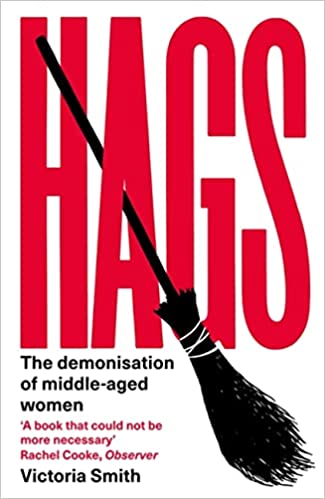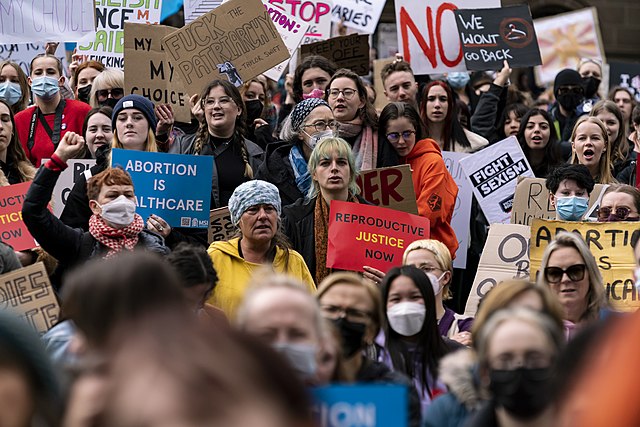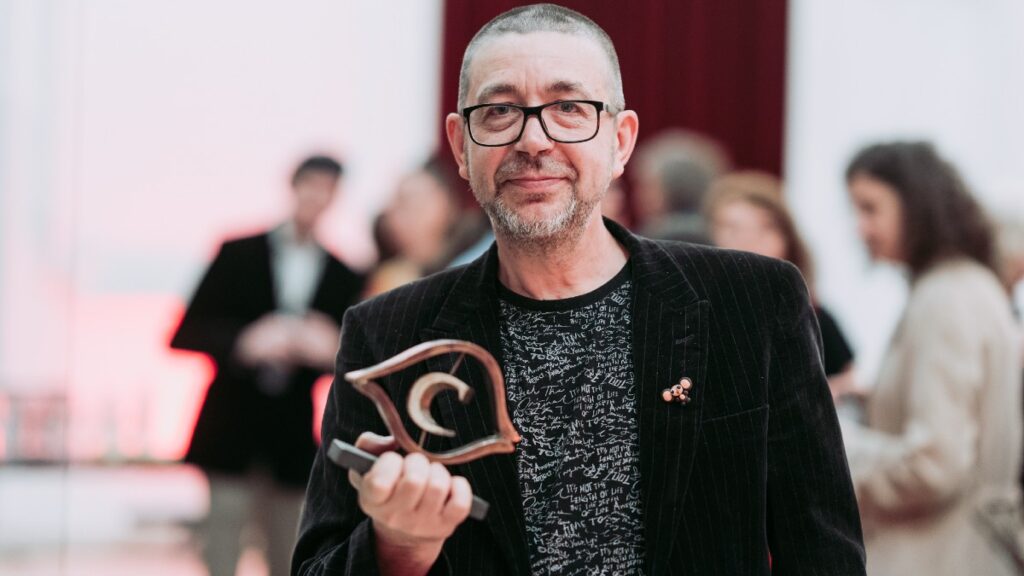The Iranian movies were probably the most attractive feature at the online Middle Eastern and North African Region Film Festival (“MENAR”), which took place in Bulgaria between 15 January and 7 February 2021. Iranian cinema has been known for sophistication, for good cinematography, for messages that sound universal, even though they usually come from a strictly Iranian social context. The organisers reported great interest in the festival, with four Iranian productions being in the top 10 of the most watched movies (Just 6.5, The Badger, Dance with Me, and A Hairy Tale).
At the request of the Persian Bridge of Friendship blog, the organisers of the festival, Pozor, shared information about the percentage numbers of screenings for each of the Iranian movies, of which there were altogether 9 out of a total of 30. Overall, 31.45% of all the festival movie screenings were Iranian ones. Here are the figures:
Just 6.5: 5.56%
The Badger: 3.87%
Dance with Me: 3.57%
A Hairy Tale: 3.50%
The Warden: 3.35%
When the Moon Was Full: 3.14%
Numbness: 2.97%
My Second Year in College: 2.95%
47: 2.54%
Now that the emotions have settled, it is worth revisiting Iran’s contribution to the MENAR Film Festival. Cinema is an art form that matters a lot to Iranians – to artists, to the public and to the state. It is a means of communicating complex ideas, which we may guess are representative of the complexity of the Iranian society and people today. So what image of Iran and Iranians can one construct from the movies at the festival?
After having watched all the short films and most of the long ones (except for The Warden and The Badger) I think I have a few purely subjective takeaways. First of all, the movies which I used to watch some 5-10 years ago tended to present idyllic country life without any plot or dealt with difficult existential dilemmas that showed the heaviness of life. What I saw this year suggests some changes of focus.
In Dance with Me the main character is Jahangir, who has a fatal illness. He seems to consider happiness and joy to be the meaning of life, but has negative emotions because he feels he has not loved and or been loved enough. His friends are also looking for happiness with everybody having their own very personal and subjective way of doing this, which sometimes leads to conflicts and tensions with the others. It looks as if there is no plot in the movie – it represents life as it is, which is typical of Iranian movies, but this time the characters have features of urban denizens – one of them sings rap, another sings opera, other people seem to have been falling in and out of love, they have educated, urbanite souls, etc. So this is one hint of changes in Iranian society: it is becoming more sophisticated but also probably more hedonistic.
Another movie, Numbness, is branded as a comedy, but in fact it is a reflection on the human soul, traumas, inabilities and the difficulty of relationships. The main characters seem to be common folk – people who don’t have an important position in business or the state administration, who don’t have a lot of money, but have more time and they seem to wonder what to do with this free time. There is a feeling that they don’t think at all about establishing any kind of organisation or community, about civic or political activity. They aren’t trying to change the world. They seem to look for ways to escape from the burden of having to choose what to do – through love, through talks with strangers, gambling, etc. But they don’t seem to have the idea that life could be about “doing the right thing”, choosing yourself or the other, fighting for the Truth – it is rather about having a nice time if you are able to do that, and maybe also about the inability to achieve lasting happiness.
What is not seen in Numbness is the upper layer of society – its managers or its people who impose and sustain order. One way to look at them, as well as to penetrate through the social divisions and inequality in Iran is through the movie Just 6.5. It is about the life of two police investigators who are battling drug distribution. They form a peculiar triangle with a high-ranking drug dealer, who lives in enormous wealth, but is caught and goes through a trial that leads to his execution. In the course of this uneven and contradictory process, we learn that everyone in this segment of society – investigators, drug dealers, homeless people, children – fights alone and stands alone before the law. It is a tough life, which can be endured only by people with a strong spirit.
My Second Year in College shows another interesting aspect of life in Iran – how it looks from the perspective of a young female undergraduate. The main character has a friend, who seems to be mentally unstable and takes pills, but who also belongs to a rich family. During a university excursion to Isfahan, the rich friend suffers a crisis and the main character leaves the role that has been prescribed to her by her parents and society. She doesn’t return to Tehran, saying that she needs to remain with her friend in hospital, and that leads to conflict with her professor and the group guide. After that the undergraduate gets to know the boyfriend of her suffering friend. And she gets a glimpse of another life, in which men seem to have greater access to money and a somewhat more liberated attitude towards women. Before she knew her friend’s boyfriend the main character used to date her cousin, who was recommended by the family. At the end, we see the heroine of the story detached from her university colleagues and associates, who have remained in their social roles, while she has traversed them…. we assume for the better.
The MENAR Film Festival also screened movies that somehow seem to be dealing with the contemporary Iranian state. When the Moon was Full received the top award of the 37th Fajr Film Festival in Tehran, as it told the story of the real life events surrounding the Rigi brothers, who were at the heart of the Jundullah terrorist organisation responsible for the bombings in Southeastern Iran, where the Balouchi Sunni minority lives. Everyone who watched the movie was deeply shocked by the level of violence which comes in what started as a purely amorous relationship between a Persian woman and one of the Rigi brothers.
It is an Iranian movie that condemns Islamic terrorism and narrow-minded interpretations of the Muslim faith which justify violence. The Iranian state is presented as the opponent of this tendency in the region – a message which is probably aimed not only at the public at home in Iran, but also at the outside world.
In one of the short movies – The Recess – we witness the last school break before a young female student goes to a football match in violation of the law that prohibits women from doing such things. Her classmates both support, warn and try to protect her. She seems to very much need this specific experience of being in the stadium and confronting the norms. In the final lines we learn about her dramatic plight in real life: she was arrested and after her meeting with the law enforcement institutions, she set herself on fire, which had a tragic ending.
The issue of women’s inequality is at the centre of 47 – where practically every female character gets hit or screamed at at some point in the story by her male companion. It is also a movie that hints at attempts for female solidarity in today’s Iranian society – as the main character, a nurse, helps an unknown woman to find shelter for the night, after she was abused by her husband. The family at the centre of the story – the nurse and her husband, have been discussing emigration for quite some time, an issue which can be observed also in other movies such as Dance with Me. So 47 tells a story that appears to cover a period of 24 hours, but in fact it is not an individual story, it is a very social movie – about class and about gender, and how problematic they can be for the weaker party in the relationship.
The last movie that I watched is probably the most artistic in terms of cinematography, as the whole story unfolds at a hairdresser’s. It is called A Hairy Tale. The monotonous life at the barber’s hides a monstrous secret… there is a killer among these three ordinary male hairdressers. And he appears to be the one that dreams of something more – who cherishes old cinema, aesthetic freedom and a female partner in his imagination.
The film is very artistic – there are constant references to the Casablanca movie and the vintage aesthetics of the old movies. It is not clear when the action takes place in terms of time. We don’t see female characters, only one fictional woman, who is the alter ego and the imaginary friend of the main character – the murderer. It is curious how the movie ends with a certain degree of imaginary or real destruction and violence – with an earthquake, shooting, etc., that destroy the barber’s shop. My guess is that it is also a social movie – about the plight of those who remain downtrodden and marginalised, with boring and monotonous everyday lives, but who need something more.
As the audiences of the 2021 MENAR Festival saw, Iranian movies have different faces and show different sides of today’s Iranian cultural identity. My guess is that Iranian society is developing and possibly moving away from sacrifice and martyrdom, and towards life in the eternal present – something which we see in Bulgaria as well, and is probably a general tendency around the world.
Iranian film directors and storytellers, as well as many of the characters, seem to be very realistic in their understanding of themselves and of others. It is a world where everyone lives and fights within the social territory and rules that are valid for them. It might sound surprising to say this but Bulgaria, having gone through the crisis of transition, knows a lot of stories about people who break the social norms and transcend social layers – especially in their youth. In the Iranian movies from the MENAR Festival 2021 I see that emotions and realities are settled and people don’t necessarily feel a sense of powerlessness which could push them to hard choices or abusive behaviour. All that makes me think that Iranian society has a level of maturity which other societies might not have.
What I might be interested in seeing in Iranian movies is the presence of more foreigners, of more people who come from other cultures and undergo transformation or bring change as a result of their interactions with Iranians. There is an absence of foreigners as characters in these movies – possibly with the exception of When the Moon was Full, where a significant part of the plot takes place in Pakistan.
Could we guess that Iranians are eager to talk to the world? And that as long as outsiders are not perceived as a threat, Iranians can contribute significantly to foreign teams and groups with their intellectual and ethical resources. For a number of years now, Iranian cinema has been demonstrating Iranian potential.
This article was originally published on 18 February 2021 at the Persisan Bridge of Friendship blog.
Photo: A moment from the movie “My Second Year in College”, which brought the actress Soha Niasati the award for the best female role at the 41st Moscow International Film Fest in 2019 (source: MENAR)
The Barricade is an independent platform, which is supported financially by its readers. If you have enjoyed reading this article, support The Barricade’s existence! See how you can help – here! Also, you can subscribe to our Patreon page.
The Barricade also has a booming Telegram channel, a Twitter account and a YouTube channel, where all the podcasts are hosted.
Warning: Undefined array key "layout_mood" in /home/klient.dhosting.pl/bcdmedia/thebarricade.online/public_html/wp-content/themes/viewtube/header.php on line 116










